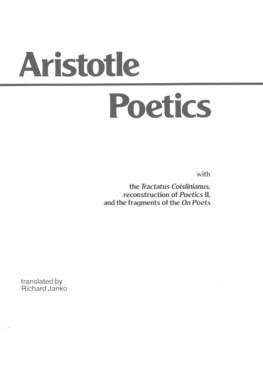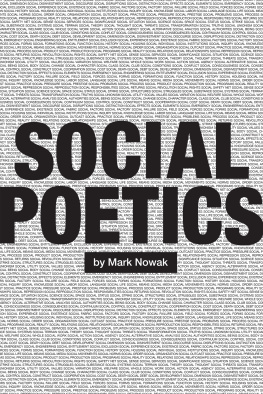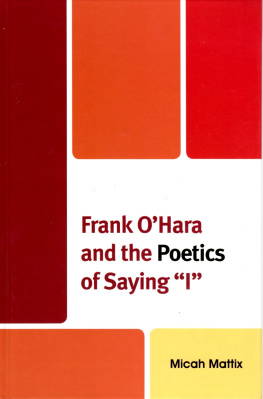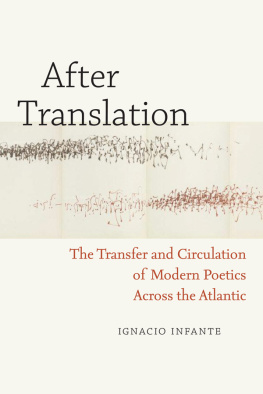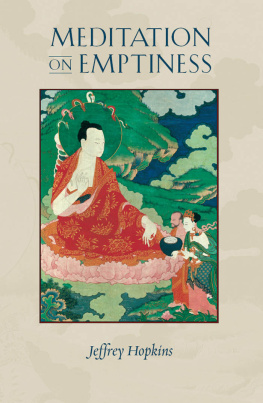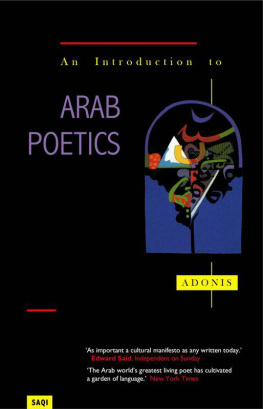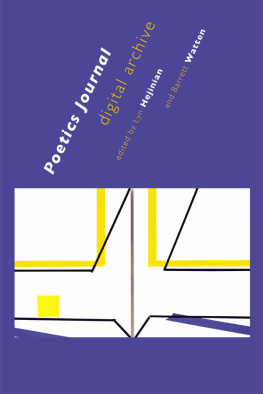P OETICS OF E MPTINESS
P OETICS OF E MPTINESS
Transformations of Asian Thought
in American Poetry
JONATHAN STALLING

2010 Fordham University Press
All rights reserved. No part of this publication may be reproduced, stored in a retrieval system, or transmitted in any form or by any meanselectronic, mechanical, photocopy, recording, or any otherexcept for brief quotations in printed reviews, without the prior permission of the publisher.
Fordham University Press has no responsibility for the persistence or accuracy of URLs for external or third-party Internet websites referred to in this publication and does not guarantee that any content on such websites is, or will remain, accurate or appropriate.
Library of Congress Cataloging-in-Publication Data
Stalling, Jonathan.
Poetics of emptiness : transformations of Asian thought in American poetry / Jonathan Stalling. 1st ed.
p. cm.
Includes bibliographical references and index.
ISBN 978-0-8232-3144-7 (cloth : alk. paper)
1. American poetryChinese influences. 2. Emptiness (Philosophy) 3. PhilosophyEast Asia. 4. Poetics. I. Title.
PS159.C5S73 2010
811.009384dc22
2010005596
Printed in the United States of America
12 11 10 5 4 3 2 1
First edition

| A book in the American Literatures Initiative (ALI), a collaborative publishing project of NYU Press, Fordham University Press, Rutgers University Press, Temple University Press, and the University of Virginia Press. The Initiative is supported by The Andrew W. Mellon Foundation. For more information, please visit www.americanliteratures.org . |
For Amy Nol Stalling
If we take an instantaneous photograph of the sea in motion, we may fix the momentary form of a wave, and call it a thing; yet it was only an incessant vibration of water. So other things, more things, apparently more stable, are only large vibrations of living substance; and when we trace them to their origin and decay, they are seen to be only parts of something else. And these essential processes of nature are not simple; there are waves upon waves, process below processes, systems within systems;and apparently so on forever.
ERNEST FENOLLOSA, THEORY OF LITERATURE
C ONTENTS
F IGURES AND T ABLES
Figures
Table
A CKNOWLEDGMENTS
In the end, I will not be able to gather the names of everyone who has contributed to this project (all my relations throughout America, China, Korea, and the UK), for its gestation has been nourished from middle school, when I first began studying Chinese and poetry. To be sure, I am grateful to my mother for holding us all together through many familial transformations and permutations and for allowing me to transform our home in the Ozarks into my own transpacific imaginary; and to my father, whose philosophical inquiry into the nature of self (and art) has formed the basis of a lifelong dialogue; and to my childhood stepfather, who made Chinese internal martial arts (bagua, xingyi, taiji), with their attendant imaginative universe, a central part of my upbringing. I owe a debt of gratitude to my sister for her steadfast support, and to the companionship of my brothers.
I would like to thank so many of my teachers, from my first Chinese instructor, Li Qinqmin, and her husband, Wang Yunlong, to my Chinese philosophy and religion professors at the University of Hawaii and UC Berkeleyespecially Dr. Michael Saso, Dr. Fransicus Verellen, and Dr. Patricia Berger. I owe a great debt to the late June Jordan, who instilled in me the belief that poetry can and does impact the world around us. I am also grateful to John Frow, who facilitated my transition to cultural theory at the University of Edinburgh, and to my professors in the Poetics Program at SUNY Buffalo, Charles Bernstein, Myung Mi Kim, Ma Mingqian, and Dennis Tedlock. Their rigorous and generous support of this project cannot be overstated. I am also very grateful for the help given to me by friendly staff at both Yales Beinecke Library and Harvards Houghton Library, where I spent many hours poring over Fenollosas papers. I also want to thank Haun Saussy, whose support of my Fenollosa research has been unbounded and whose scholarly rigor continually inspires me, and Lucas Klein, who has been another partner in my effort to have Fenollosas important unknown work acknowledged. There have also been numerous people who have read portions or all of this book in various stages, but I would like to single out John Whalen-Bridge for his helpful comments, as well as my colleagues at the University of Oklahoma, Ron Schliefer and Daniel Cottom, who both painstakingly commented on this work, as well as Charles Alexander and Linda Russo, who have also provided helpful suggestions and comments along the way. I also want to acknowledge my students at OU, and students and colleagues at Beijing Normal University, who have in one way or another helped me formulate the ideas that inform this work. I must stress my sincere gratitude to the anonymous readers at Fordham University Press, whose helpful suggestions and comments have improved this book greatly, and to Thomas C. Lay whose steadfast editorial attention kept the project moving forward at all points, and Helen Tartar, whose unwavering support of my work began with the acceptance of The Chinese Written Character as a Medium for Poetry: A Critical Edition and continues unabated through to the present. I am especially grateful to the careful attention provided by the editors of the American Literatures Initiative, Tim Roberts and my copy editor, Ruth Steinberg, who painstankingly overturned every word to look for (the many) elements that needed a firm editorial hand.
Material support for the present volume came from grants from the McNulty Fellowship in Ethnopoetics, which supported my research at SUNY Buffalo; and from two Junior Faculty Research Fellowships and a Presidential Travel Fellowship (to China) at the University of Oklahoma. I would also like to thank the Andrew W. Mellon American Literatures Initiative, without which the present volume would likely not have been possible. I would also like to thank Wang Yahui, a Calligraphy PhD student at Capital Normal University in Beijing and student of Zhongshi Ouyang for the calligraphy that adorns the opening of each chapter. I would also like to thank the University of California Press and New Directions Press for permission to reprint various images, SUNY Press for permission to publish a much expanded and updated version of a chapter published in The Emergence of Buddhist American Literature ( ed. John Whalen-Bridge and Gary Storhoff, 2009), and especially Brice Marden for granting me permission to use his painting for the cover.
Finally, I want to thank my wife and children, who reward me daily with the tremendously rich texture of a life lived among them. This project would simply not exist were it not for my wife, Amy, who has for years kept us all on the right side of the road when my mind would wander off into the complex architecture of the present volume. More importantly, the warm and full life she made available outside of this work enabled me to return to it time and again with restored energy and interest. Proximity, the simple fact of being close to them everyday, is the most rewarding aspect of being alive.
In the end, many have contributed to the aggregate of causes and conditions that have become this work, but any and all errors are mine alone: a textbook case of karma in action. I offer this work, with all its imperfections, in the hope that it may stimulate more waysbetter waysto explore the always-shifting planes of the poetics of emptiness.
Next page

